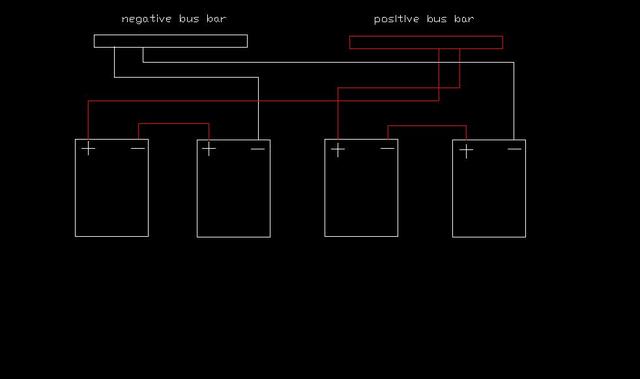I service my batteries (24 Rolls-Surrette T12-250's) every three months. The service procedure involves fully charging the bank as the first step. Then, with the generator running and my RE system shut down, I flip my big Ronk 200 amp manual transfer switch. The transfer switch disconnects gen power to the inverters while simultaneously disconnecting the inverter output to the loads, and switches all the loads over to gen power. It totally removes the inverters and battery bank from the loads so the inverters go idle.
I takes about 4 hours to service the bank. Those batteries are heavy and hard to handle, but I pull them off the bank in pairs to check them out. I stick a 2" wide piece of painter's tape to the top of the battery and record the at-rest voltage of it on the tape with a marker. I check the electrolyte level in the cells, and check the SG of each cell with a hydrometer and record it on the tape. I then apply a 50 amp load to the battery with my Sun AVR for one minute and record the loaded voltage that it shows after one minute on the tape. If the battery checks out it goes back online.
When I serviced my bank in September 2011 I had the batteries hooked up this way:

What I found was batteries all over the place on SOC. Some of the batteries varied from others by up to .28 volts at-rest and the ones with low at-rest voltage fell flat on their face during the load test.
After servicing all the batteries I sat on my upside down five gallon pail staring at the bank while drinking a beer and decided this is not good. I got 12 series connections in the bank and 24 cables going from the bank to the bus. No two batteries are ever identical. But the challenge is, when you connect them series, just how do you determine which ones are matched so they stay even during charging and discharge?
So I changed all the bank wiring around to this:

I eliminated 12 cables from the bank to the bus. I eliminated 6 series connections in the bank. I figured, what the heck - with pairs in parallel like that, and connecting two pairs in series, maybe it will stay balanced better. It's worth a try.
I got a little behind on my bank servicing this last time with the holidays and stuff. I just got it done yesterday, for the first time since I had changed the wiring around. It worked! The furthest off any two batteries were in the entire bank was .04 volts this time. They all tested 1.270-1.275 SG, and all load tested so close to identical that it's not even worth mentioning or recording the difference between any two.
--
Chris